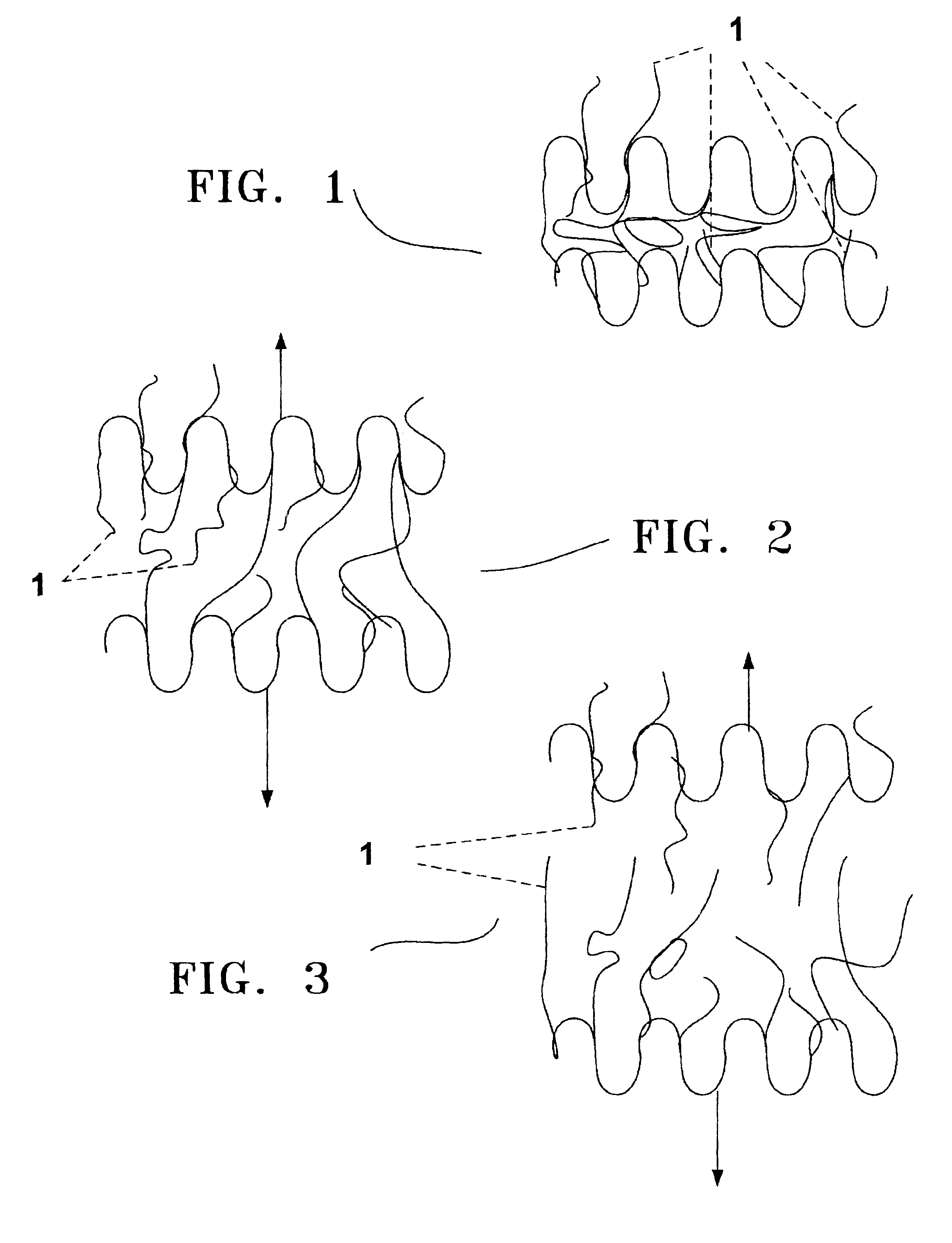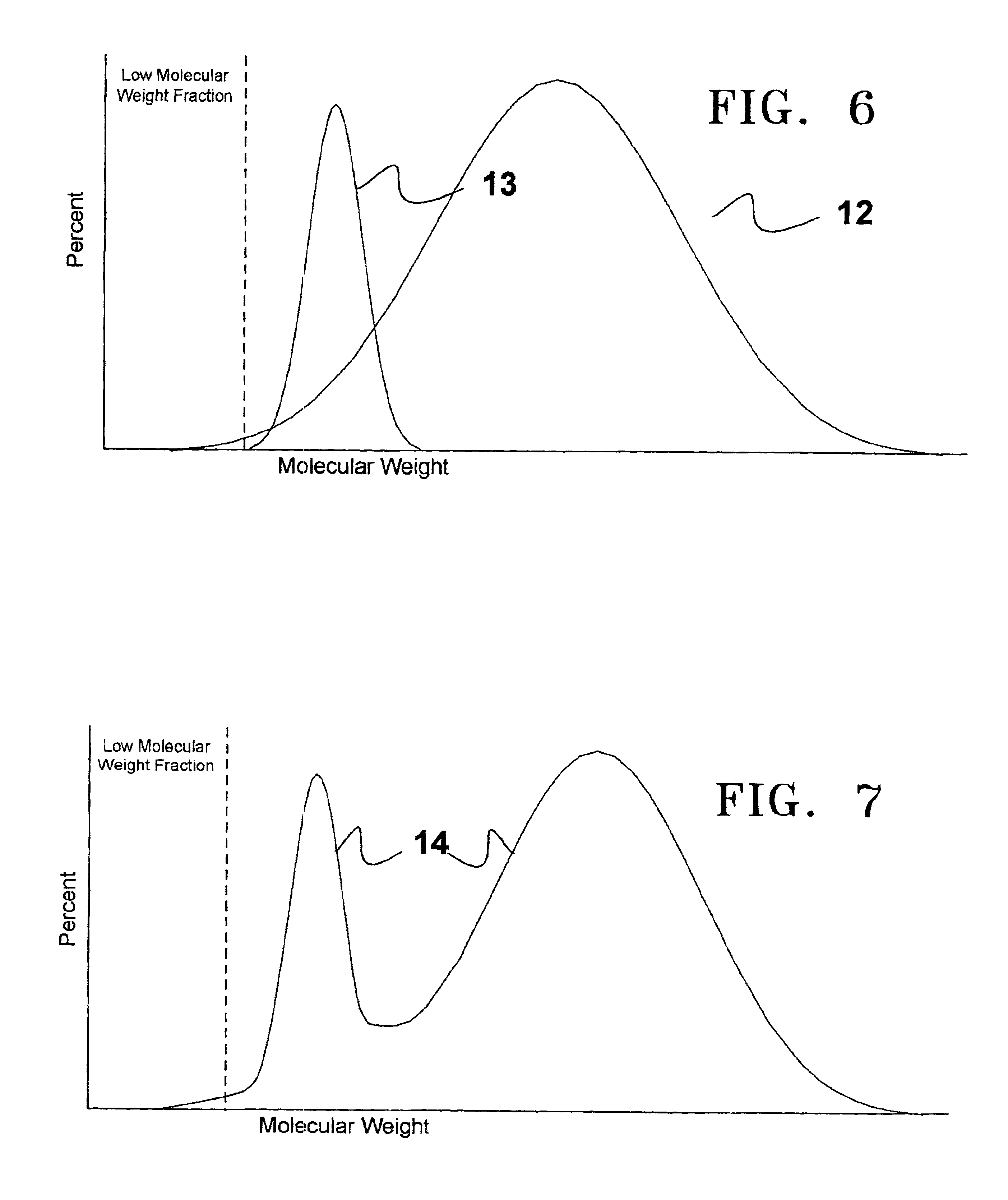Melt blended high-density polyethylene compositions with enhanced properties and method for producing the same
a polyethylene composition and high-density technology, applied in the field of high-density polyethylene compositions with enhanced properties, can solve the problems of inability to easily modify the physical properties of the polyethylene composition, disadvantage of too low density, and limited to medium-density polyethylene, etc., to achieve enhanced processability, improve processability, and high melt index
- Summary
- Abstract
- Description
- Claims
- Application Information
AI Technical Summary
Benefits of technology
Problems solved by technology
Method used
Image
Examples
example 2
requires the polyethylene composition to have a density of 0.952 grams per cubic centimeter and MI of 0.32 grams per 10 minutes.
example 3
requires the polyethylene composition to have a density of 0.953 grams per cubic centimeter and MI of 0.2 grams per 10 minutes.
example 4
requires the polyethylene composition to have a density of 0.953 grams per cubic centimeter and MI of 0.32 grams per 10 minutes.
The four examples were chosen by selecting the four combinations of the limits of density and MI typically utilized by the corrugated HDPE manufacturer. For examples both a unimodal and bimodal HMW HDPE copolymer were chosen. The unimodal HMW HDPE utilized is Chevron Phillips Chemical Company HXM 50100-02 having a density of 0.950 grams per cubic centimeter and MI of 0.05 grams per 10 minutes. The bimodal utilized for the examples is Equistar L5005 having a density of 0.949 grams per cubic centimeter and MI of 0.06 grams per 10 minutes. However many HWM HDPE copolymers are suitable, a partial list includes: Formosa Plastics Corp. Formalene F904 and F905; Exxon Mobil Chemical Company HD-7760, HD-7745, HD-77-700F and HD 7755; Equistar L4907 AND L 4903.
The LMW HDPE homopolymer utilized in the examples is Exxon Mobil Chemical Company HD-6908 having a density of...
PUM
| Property | Measurement | Unit |
|---|---|---|
| density | aaaaa | aaaaa |
| density | aaaaa | aaaaa |
| FRR | aaaaa | aaaaa |
Abstract
Description
Claims
Application Information
 Login to View More
Login to View More - R&D
- Intellectual Property
- Life Sciences
- Materials
- Tech Scout
- Unparalleled Data Quality
- Higher Quality Content
- 60% Fewer Hallucinations
Browse by: Latest US Patents, China's latest patents, Technical Efficacy Thesaurus, Application Domain, Technology Topic, Popular Technical Reports.
© 2025 PatSnap. All rights reserved.Legal|Privacy policy|Modern Slavery Act Transparency Statement|Sitemap|About US| Contact US: help@patsnap.com



